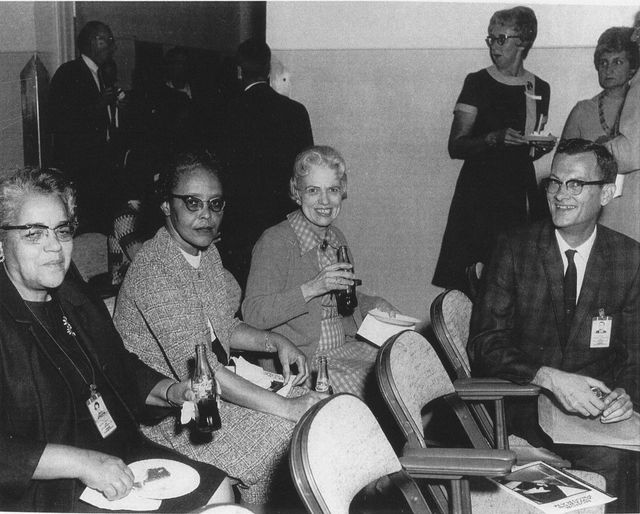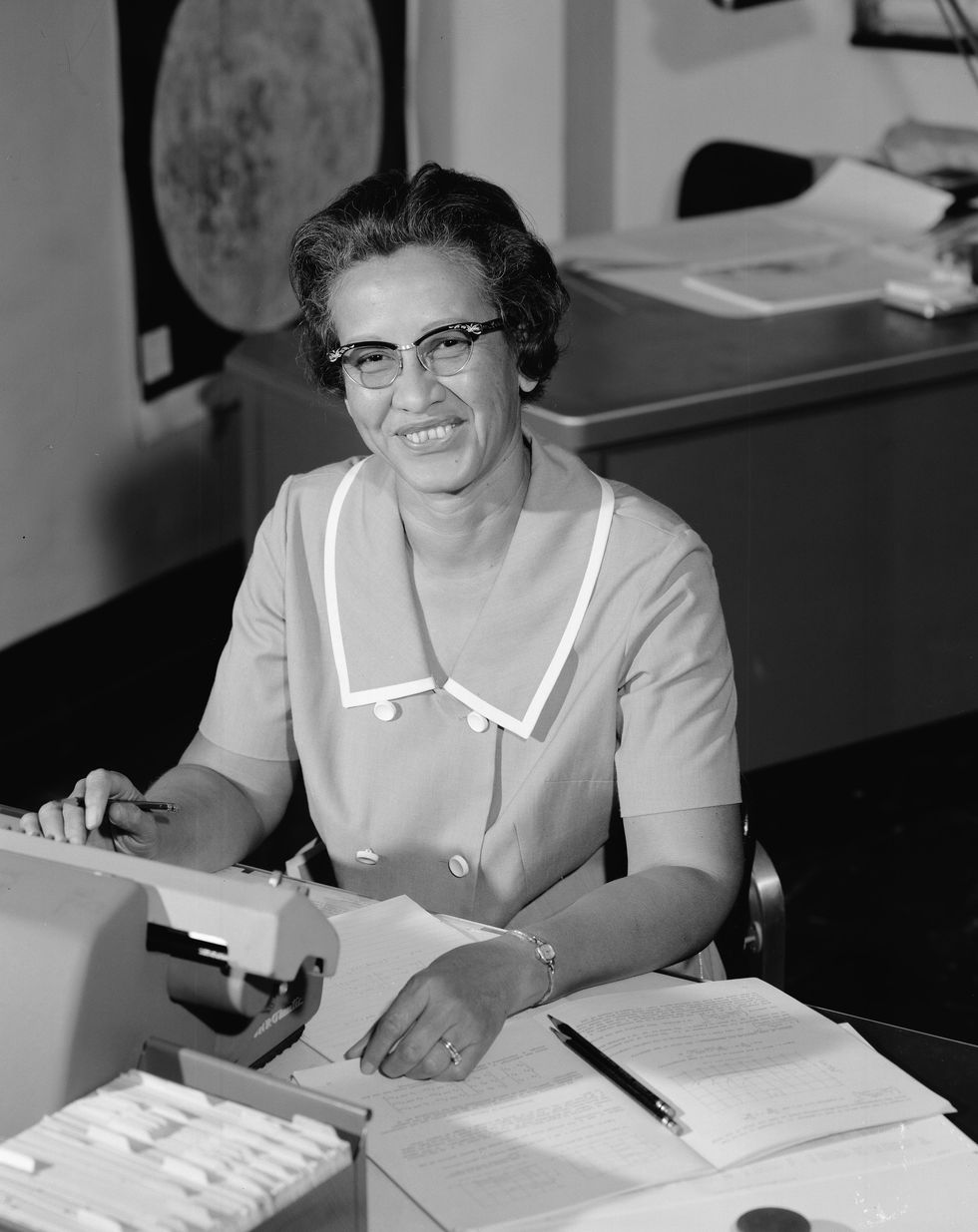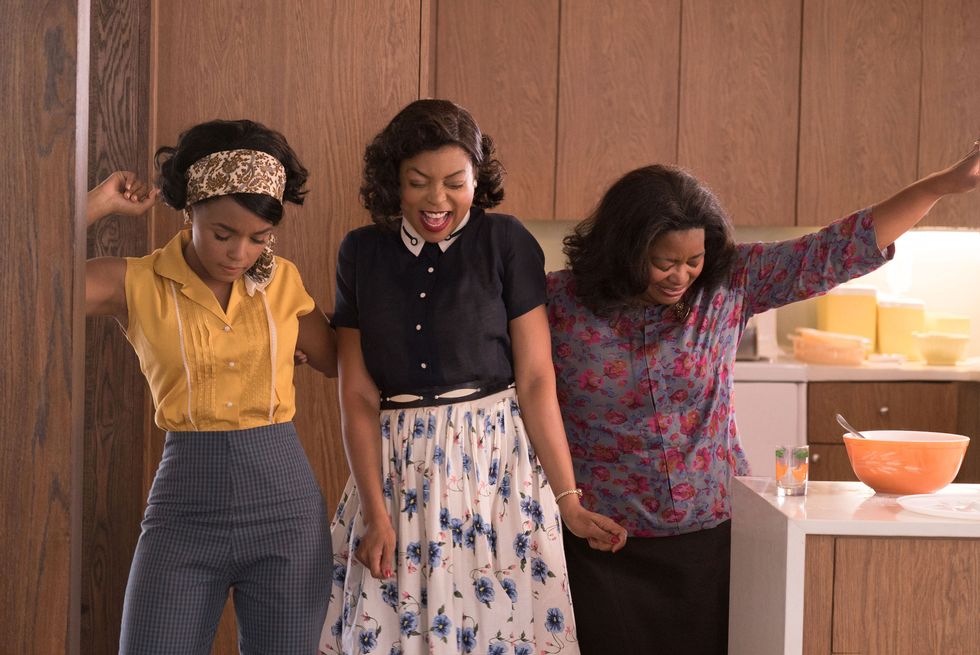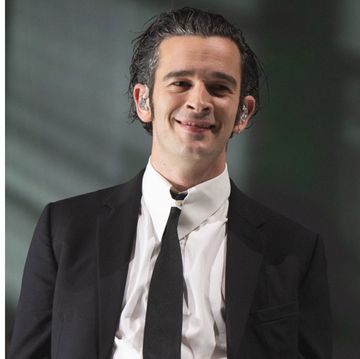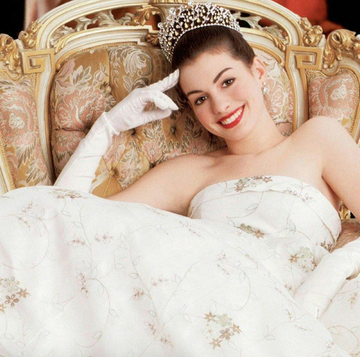There's a moment halfway through Hidden Figures, when a head NASA engineer refuses the request of Katherine Johnson (Taraji P. Henson) to attend a meeting about John Glenn's upcoming mission to become the first American to orbit the Earth. Stafford's response is dismissive—"There's no protocol for women attending." Undeterred, Johnson quips, "There's no protocol for a man circling Earth either, sir."
The quote underlines this based-on-a-true-story movie, set for a limited release on Christmas Day. For NASA to get John Glenn into space and back home safely, institutions' prejudices and biases needed to start tumbling down. All hands (and brains) had to be on deck.
Adapted from Margot Lee Shetterly's book Hidden Figures: The American Dream and the Untold Story of the Black Women Mathematicians Who Helped Win the Space Race, the film focuses on three real-life African-American female pioneers: Katherine Johnson, Dorothy Vaughan, and Mary Jackson, who were part of NASA's team of human "computers." This was a group made up mostly of women, who calculated by hand the complex equations that allowed space heroes like Neil Armstrong, Alan Shepard, and Glenn to travel safely to space. Through sheer tenacity, force of will, and intellect, they made their mark on American history—even if that story has remained obscured from public view until now.
"A Large Capacity for Tedium"
Women worked as so-called human computers decades before space exploration. In the late 19th century, the Harvard College Observatory employed a group of women who collected, studied, and cataloged thousands of images of stars on glass plates. As chronicled in Dava Sobel's book The Glass Universe, these women were every bit as capable as men despite toiling under less than favorable conditions. Williamina Fleming, for instance, classified more than 10,000 stars using a scheme she created and was the first to recognize the existence of white dwarfs. While working six-day weeks at a job demanding "a large capacity for tedium," they were still expected to uphold the societal norms of being good wives and mothers.
In 1935, the NACA (National Advisory Committee for Aeronautics, a precursor to NASA) hired five women to be its first computer pool at the Langley campus. "The women were meticulous and accurate...and they didn't have to pay them very much," NASA's historian Bill Barry says, explaining the NACA's decision. In June 1941, with war raging in Europe, President Franklin Roosevelt looked to ensure the growth of the federal workforce. First he issued Executive Order 8802, which banned "discrimination in the employment of workers in defense industries or government because of race, creed, color, or national origin" (though it does not include gender). Six months later, after the attack on Pearl Harbor brought the U.S. into the throes of war, NACA and Langley began recruiting African-American women with college degrees to work as human computers.
While they did the same work as their white counterparts, African-American computers were paid less and relegated to the segregated west section of the Langley campus, where they had to use separate dining and bathroom facilities. They became known as the "West Computers." Despite having the same education, too, they had to retake college courses they had already passed and were often never considered for promotions or other jobs within NACA. Hidden Figures depicts this in a scene in which "computer" Mary Jackson is asked if she'd want to be an engineer if she were a white man. Jackson responds, "I wouldn't have to. I would already be one."
Katherine Johnson, the movie's protagonist, was something of a child prodigy. Hailing from the small West Virginia town of White Sulphur Springs, she graduated from high school at 14 and the historically black West Virginia State University at 18. In 1938, as a graduate student, she became one of three students—and the only woman—to desegregate West Virginia's state college. In 1953, Johnson was hired by NACA and, five years later, NACA became NASA thanks to the Space Act of 1958.
The movie muddies the timeline a bit, but Johnson's first big NASA assignment was computing the trajectories for Alan Shepard's historic flight in 1961. Johnson and her team's job was to trace out in extreme detail Freedom 7's exact path from liftoff to splashdown. Since it was designed to be a ballistic flight—in that it was like a bullet from a gun, with a capsule going up and coming down in a big parabola—it was relatively simple, at least in the context of what was to come. Nonetheless, it was a huge success and NASA immediately set its sights on America's first orbital mission.
The film primarily focuses on Glenn's 1962 trip around the globe and does add dramatic flourishes that are, well, Hollywood. However, most of the events in the movie are historically accurate. Johnson's main job in the lead-up to and during the mission was to double-check and reverse engineer a newly installed IBM 7090's trajectory calculations. As it shows, there were very tense moments during the flight that forced the mission to end earlier than expected. And Glenn did request that Johnson specifically check and confirm trajectories and entry points that the IBM spat out (albeit not at the exact moment that the movie depicts). As Shetterly wrote in her book and explained in a September NPR interview, Glenn did not completely trust the computer. So he asked the head engineers to "get the girl to check the numbers.... If she says the numbers are good...I'm ready to go."
While Johnson is the main character, Hidden Figures also follows the trajectories of Dorothy Vaughan and Mary Jackson as they work on the Friendship 7 blast-off. Vaughan (Octavia Spencer) was one of NACA's early computer hires during World War II. She became a leader and advocate for the "West Computers." In 1948, she became NACA's first black supervisor and, later, an expert FORTRAN programmer.
Despite these successes and her capability, she was constantly passed over for promotions herself. As Spencer tells PopularMechanics.com, Vaughan struggled with the same things all female computers did while at NASA. "The conflict of working outside of the home to provide the best life for your children and, yet, not physically being there. But she knew she was changing the world."
While Mary Jackson (Janelle Monáe) is also considered a "hidden figure," she certainly stood out during her time at NASA. After graduating with dual degrees in math and physical science, she was hired to work at Langley in 1951. After several years as a computer, Jackson took an assignment in assisting senior aeronautical research engineer Kazimierz Czarnecki and he encouraged her to become an engineer herself. To do that, however, she needed to take after-work graduate courses held at segregated Hampton High School. Jackson petitioned the city of Hampton to be able to learn next to her white peers. She won, completed the courses, and was promoted to engineer in 1958, making her NASA's first African-American female engineer—and, perhaps, the only one for much of her career.
John Glenn
While these three women's stories remain front and center, John Glenn's recent death makes this film particularly timely. Featured prominently, Glenn is depicted as a goal-oriented, joke-making, tension-cutting, folksy equal opportunist. According to Barry, that's pretty much exactly how he was.
"Everybody thinks of John Glenn as this iconic war hero...and astronaut, but what's missed a lot is his humanity," says Berry. "Glenn was, in a classic sense, a gentleman. He was always concerned about the people around him and it didn't matter what package they were in. He was a real people person."
Barry also notes that there's an "Easter egg" in the film that most people won't catch. There's a short scene where Glenn is talking to reporters, and beside him there's a woman—Cece Bibby—painting the Friendship 7 logo onto the spacecraft. The true story is that NASA officials originally did not allow Bibby access to the launchpad, but Glenn intervened and insisted that the artist be allowed to do her job.
Another Day's Work
There's no way a two-hour movie could tell the full story of these women; Shetterly's book paints a much fuller picture. But Hidden Figures highlights NASA's (relatively) progressive attitude for the time, driven in large part by necessity. This happens literally in the film, when the head of the Space Task Group, Al Harrison (Kevin Costner), destroys the "colored ladies room" bathroom sign, effectively rendering all bathrooms the same. As Shetterly tells PopularMechanics.com, the movie also focuses on Johnson, Jackson, and Vaughan's "transcendent sense of humanity," which allowed them to endure.
Johnson would go on to work on the Apollo program, too, including performing trajectory calculations that assisted the 1969 moon landing. She would retire from NASA in 1986. In 2015, President Obama gave Katherine Johnson the Presidential Medal of Freedom. Last May, a NASA computational research facility in her hometown of Hampton, Virginia, was named in Johnson's honor. And yet, despite the accolades and getting the Hollywood treatment, she told the audience in May that she was just doing her job and "it was just another day's work."
Sometimes changing the world is just that.

